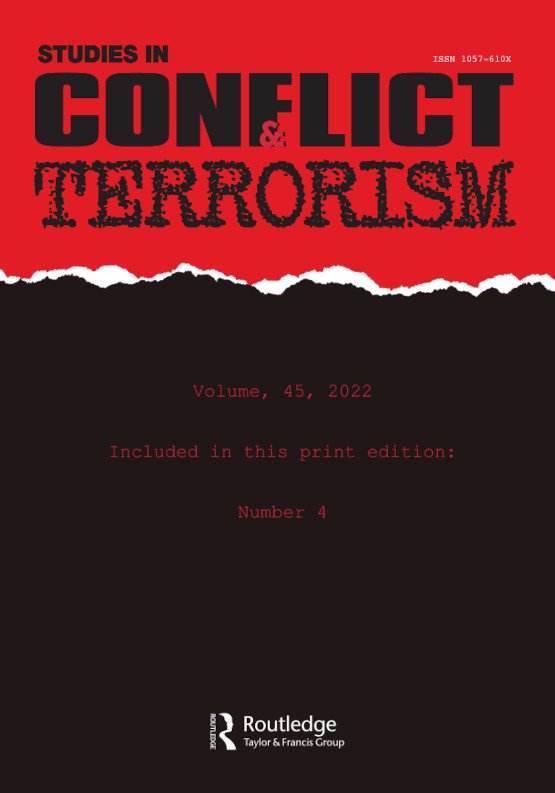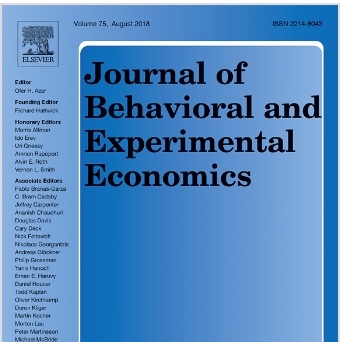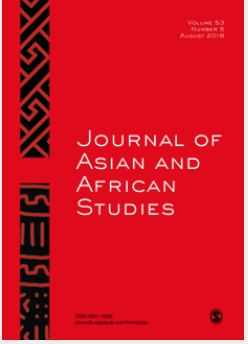Selected Publications
Selected Publications
Civil–Military Relations: Through a Perilous Lens
Since Huntington’s seminal work The Soldier and the State, the scholarship on civil–military relations in the American context has often emphasized the need for a professional military to maintain an apolitical stance and let the civilian principals lead. In this article, we ask, what can we learn about civil-military relations by seeking to better understand the relationship between political institutions and the politicization of the military? We argue that this literature insufficiently accounts for the perils that exist within separation of powers (i.e., presidential) systems. Consequently, the existing scholarship cannot distinguish when politicization happens because of or despite civilian principals. We use long-standing arguments from Comparative Politics to explain why problems of separation of powers systems are endemic to these institutions. We then present five questions and two examples to facilitate a theoretical reframing of the subject. Our argument suggests more work is needed to understand how American political institutions shape civil–military relations.
The Second Insurgency: Explaining the Rise of Late-Entering Insurgent Groups in El Salvador and Guatemala
Why do new insurgent groups within ongoing insurgencies? Extant studies assume all insurgent groups in a society arise from the same social cleavages, resource, and institutional preconditions. Yet late-entering insurgent groups’ success depends on beating early insurgent groups in acquiring resources and obtaining sympathizers and recruits. A comparative analysis of insurgencies in El Salvador (1970-1992) and Guatemala (1960-1996), based on insights from First Movers’ Advantage (FMA) theory in the field of marketing strategy, demonstrates that late insurgent groups arise from opportunities created by early insurgent groups’ failure to: (a) present a distinct ideological frames; (b) establish cohesive organizations with popular and effective leaders; (c) capture resources; and, (d) prevent sympathizers and recruits from switching or ceasing support.
The Association of Electoral Volatility and Religious Riots in India
With Prashant Hosur Suhas
Why are religious riots between Hindus and Muslims endemic in some states of India and not in others? Scholarship on the topic is divided between those arguing that electoral competition increases the occurrence of such riots and those arguing that electoral competition decreases the occurrence of such riots. Both types of explanations assume a relationship between political parties and religious violence, but they ignore voting behavior. This paper accounts for party system instability or change, measured in terms of electoral volatility, to argue that electoral volatility in the Indian party system is a key overlooked determinant of religious violence. Specifically, higher levels of electoral volatility, implying high switching of party allegiances by voters, may indicate the process of ethnic outbidding that causes violence.
Checking trust: observing social capital at the individual level
with Carolyn E. Holmes
Social capital research has measured the concept in two distinct ways: through direct reporting by participants in cross-national surveys and the presence of associative organisations. Both strategies raise difficulties: the former restricts comparability and assumes group stability; the latter relies on literal translation and uses direct questioning. We problematise these approaches and argue that the ratio of ‘check-points’ where individuals are asked to demonstrate adherence to rules, and ‘trust-points’ where such proofs are not required, can better measure social capital. Moreover, the unevenness of social capital between groups is perceptible by ‘fast-lanes’ that differentially treat individuals based on identity. Evidence from a field survey and observational evidence in South Africa is presented.
When the choice is made matters: voting in Japan’s 2012 House of Representatives election
What influences the timing of vote choices in mixed-member systems and to what extent does this influence split-ticketing voting? Although voters cast both ballots in effect simultaneously, they may make their decisions on which candidate and party to support sequentially. Using Japan’s 2012 election as a case study, empirical analyses find that the district nominations influence the timing of one’s district vote intention. Meanwhile the timing of vote choices corresponds with ticket-splitting, even after controlling for partisan and socio-economic factors.
Political Leanings and Social Capital
With Anand Jha and Christopher J. Boudreaux
The research shows that the political leanings and social capital of the region around firms’ headquarters affect corporate and individual decisions. What remains unexplored is whether social capital and political leanings are associated with each other. To fill this gap, we use the ratio of votes cast for Democratic candidates to those cast for Republican candidates in presidential elections to measure the Democratic political leanings in the United States. We find that counties with more social capital lean toward the Democratic Party. A one standard deviation increase in social capital is associated with a 0.30 standard deviation increase in the vote ratio. Additional tests show that this positive association is stronger in counties that have higher incomes and less religiosity.
Inequality and Elections: The Nationwide Origins and State-Level Dynamics of India's Maoist Insurgency
With Srobana Bhattacharya and Anand Jha
This article investigates the causes of India's Maoist insurgency and its changing dynamics. To explain its origins, we empirically test three hypotheses using cross-state-level data: inequality of wealth in states; inefficient state government; and, disgruntled provocateurs. Our analysis reveals that insurgency is caused by inequality of wealth in states, not inefficient state governments and disgruntled provocateurs. Subsequently, we study variations in the number of Maoist attacks and the selected targets in the eastern Indian state of West Bengal using newspaper reports of events. Our analysis demonstrates that the numbers of incidents and the type of targets selected depend on electoral competition between regional political parties and their interactions with Maoists. The findings, therefore, indicate that whereas inequality of wealth can explain the insurgency's presence in states, political competition within states could explain its dynamics.
Lesotho’s 2015 Legislative Election: Providing or Undermining Stability?
With Timothy S. Rich
Political unrest in 2014 threatened Lesotho’s newly found democratic stability. Observers focus on educating the public about the electoral system and encouraging pre-election coalition discussions. However, this analysis suggests that such remedies ignore the institutional influences of Lesotho’s electoral system that undermine both public understanding and stability. Furthermore, a statistical analysis of district competition finds the 2015 elections to be largely consistent with previous elections, but that the percentage of rejected ballots correlates with a district victory for the largest party. Although this may simply be a statistical anomaly, the findings highlight structural challenges and reconsideration of electoral reforms.
District level competition in Mexico’s chamber of deputies: an embedded analysis
With Timothy S. Rich
Why does Mexico’s mixed legislative system diverge from Duverger’s Law? Rather than rehash cultural and historical explanations, we suggest two institutional factors – a fused ballot and compulsory voting laws – may explain this divergence. Cross-national evidence controlling for these factors suggests Mexico is not an outlier and that the fused ballot encourages multiparty district competition. The results also suggest ways reforms could bring competition closer toward Duvergerian expectations.
“District Competition in Japan’s 2014 Election: The Roles of Nominations, Incumbency, and Dual-Listing.”
With Timothy S. Rich
Duverger’s Law expects two-party competition in single member districts (SMDs), but evidence from mixed member systems is less consistent with these theoretical expectations. Rather than simply focusing on whether Japan’s most recent House of Representatives election converges toward Duvergerian equilibrium, this article focuses on three factors within Japan. In particular, how do the roles of major party nominations, incumbency, and dual-listing shape district competition vis-à-vis Duverger? Empirical results find that the lack of a Democratic Party of Japan candidate decreases the effective number of candidates, while the lack of a Liberal Democratic Party candidate, multiple incumbents, and dual-listing correlates with an increased number of candidates. The results suggest that often ignored underlying effects of Japan’s mixed system influences its consistency with theoretical expectations.
The Religious Origins of Class Coalitions: Elite Participation in Religiously Motivated Peasant Rebellions in Mexico, Zimbabwe, and India
This article explains why elite classes participate in religiously motivated peasant rebellions. This question is important because, although elite resources are required to overcome collective action barriers, extant research ignores why elites collaborate in religiously motivated peasant rebellions. The article compares the Moplah Rebellion in colonial India, the Cristero Rebellion in revolutionary Mexico, and the Chimurenga Rebellion in white-controlled Zimbabwe to test three common explanations for elite participation: low inequality between elites and peasants; moderate political repression or opportunity; and shared religious organizations with the peasantry. The findings demonstrate that elite cooperation is critically contingent on shared religion because it creates cross-class ideologies and lowers the costs of participation by elites. However, the effects of inequality of wealth and political opportunities are inconclusive. By doing so, the article introduces a theory of elite participation that can be tested and refined to understand ongoing religiously motivated rebellions in agrarian societies as disparate as Pakistan, Nigeria, and the Philippines.
Regime Type or Political Instability? Why Pakistan Deescalates or Enters Wars
With Prashant Hosur
The Indo-Pakistani rivalry is among the most hostile in the world today. This paper provides a new explanation for why we observe variation in hostility levels in this rivalry. This article studies the effects of different regimes--civilian, military, or mixed--and political stability in Pakistan on the decisions to enter into or de-escalate from crises with India. The findings demonstrate that Pakistan deescalates from crises if politically stable and enters wars if politically unstable. However, the effects of regime type, civilian, military, or mixed, are inconclusive. The paper shifts the focus from regime type to regime stability.
Running Out of Time? The Evolution of Taiwan’s Relations in Africa
With Timothy S. Rich
This article highlights the precarious nature of Taiwan’s diplomatic relations in Africa. Whereas Cold War rationales initially benefitted Taiwan, economic interests now appear to incentivize African countries to establish relations with China. Through qualitative and quantitative data covering much of the post-World War II era, this analysis argues that economic factors have trumped political ration-ales for Taiwanese–African relations. In addition, this article prob-lematizes both conceptions of diplomatic recognition and Taiwan’s enduring relations with Africa.
Identifying the Institutional Effects of Mixed Systems in New Democracies: The Case of Lesotho
with Timothy S. Rich and Sterling Recker
This paper addresses the effects of the mixed system used for the last three elections in Lesotho (2002, 2007 and 2012), a small African country with a turbulent history regarding opposition acceptance of elections. The decision to implement a mixed system was in part to encourage democratic stability, yet whether the electoral system has become more conducive to democratic competition is unclear. Through an analysis of national and district-level results, this paper addresses the following questions. First, at the district level, is competition consistent with Duverger’s law or the contamination thesis and is a progression over time evident? Second, does the population size of a district influence the number of candidates and the concentration of votes? Finally, following recent research on detecting electoral fraud, this paper tackles whether the reports of district results suggest extra-institutional manipulation.













